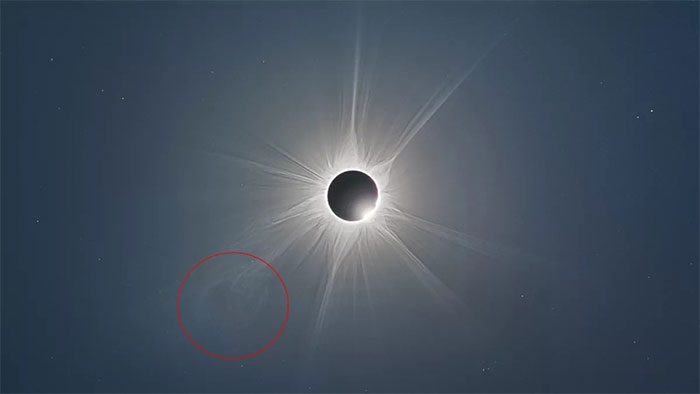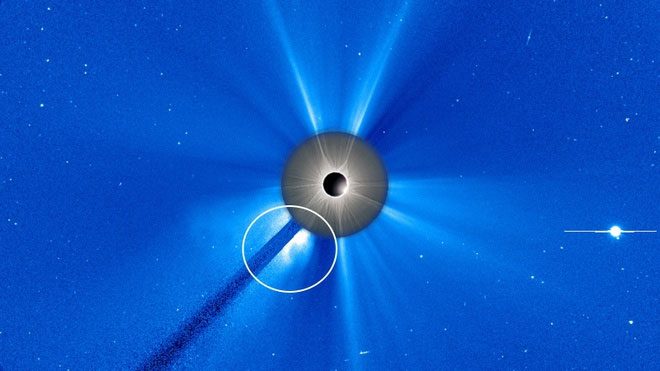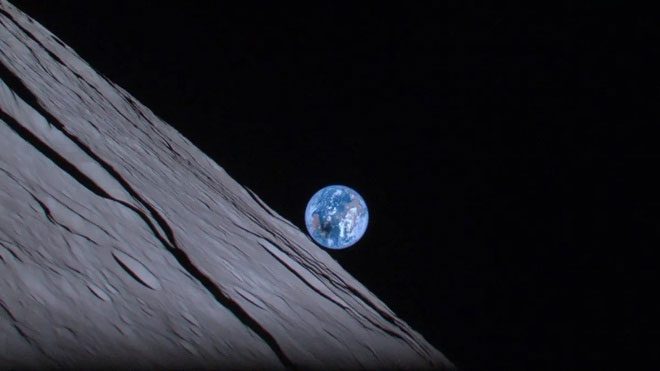A group of astronomers accidentally captured the moment of a solar storm while photographing a hybrid solar eclipse in the sky over Australia last week.

The solar storm (within the red circle) during the total solar eclipse that occurred in Australia on April 20. (Photo: Petr Horálek, Josef Kujal, Milan Hlaváč).
The image reveals the rays of the solar corona, the outer atmosphere of the Sun. However, what stands out the most is a strangely shaped halo emanating from a coronal mass ejection (CME), or solar storm.
The extremely rare hybrid solar eclipse that took place on April 20 is known as a hybrid solar eclipse because from different locations, observers could see either a total solar eclipse, where the Sun is completely obscured by the Moon, or an annular eclipse, where the Moon partially covers the Sun, revealing a surrounding halo. This was the first hybrid eclipse in over a decade.
The photo capturing the solar storm during the eclipse is a composite of hundreds of images taken by Czech astronomers Petr Horálek, Josef Kujal, and Milan Hlaváč from Pebble Beach in New South Wales, Australia, according to Spaceweather.
The image shows the total eclipse at its maximum position, a rare opportunity to observe the solar corona. “The details recorded in the image are more than what the human eye can see,” Horálek stated.
The photographers aimed to capture the solar corona, and to their surprise, they also recorded the erupting solar storm. In the initial image, the CME appeared quite faint. However, when combined with images from NASA’s Solar and Heliospheric Observatory (SOHO), the storm became clear.

The solar storm in the photographers’ image corresponds with the eruption of particles from the images taken by the Solar and Heliospheric Observatory. (Photo: Petr Horálek).
The solar corona is particularly strong in the new images, indicating the peak of the 11-year solar cycle during which solar activity rises to a maximum and then gradually decreases. The solar storm is further evidence that solar activity is on the rise.
The images also depict the “diamond ring effect,” which occurs when the Sun begins to emerge circularly from behind the Moon as the total solar eclipse is nearing its end.
The effects of the hybrid eclipse can also be seen from space. On the same day, Japan’s lunar lander Hakuto-R captured a photo “Earthrise,” as the planet gradually emerged from behind the Moon. In this image, due to the eclipse, Australia remained covered by the Moon’s shadow, appearing as a large dark patch on the planet’s surface.

Moment Earth emerges from behind the Moon captured by Hakuto-R from space. Australia is the dark area still obscured by the Moon. (Photo: ispace).
Previously, solar eclipses have also provided opportunities for astronomers to capture once-in-a-lifetime images, such as the “golden ring” taken by Chinese photographer Shuchang Dong during the eclipse in Tibet in 2020.


















































